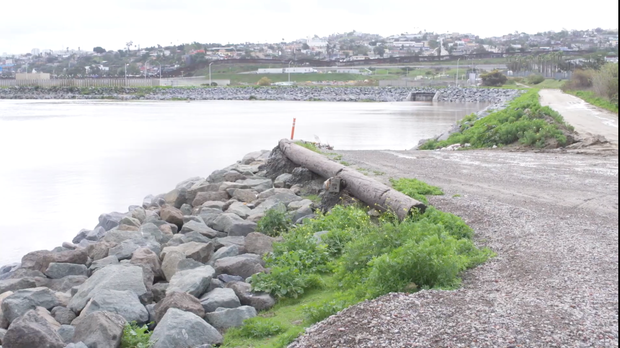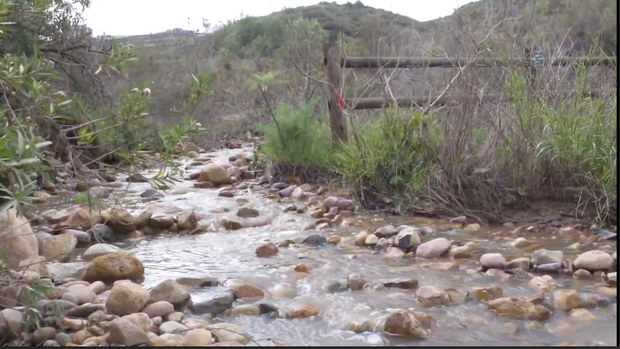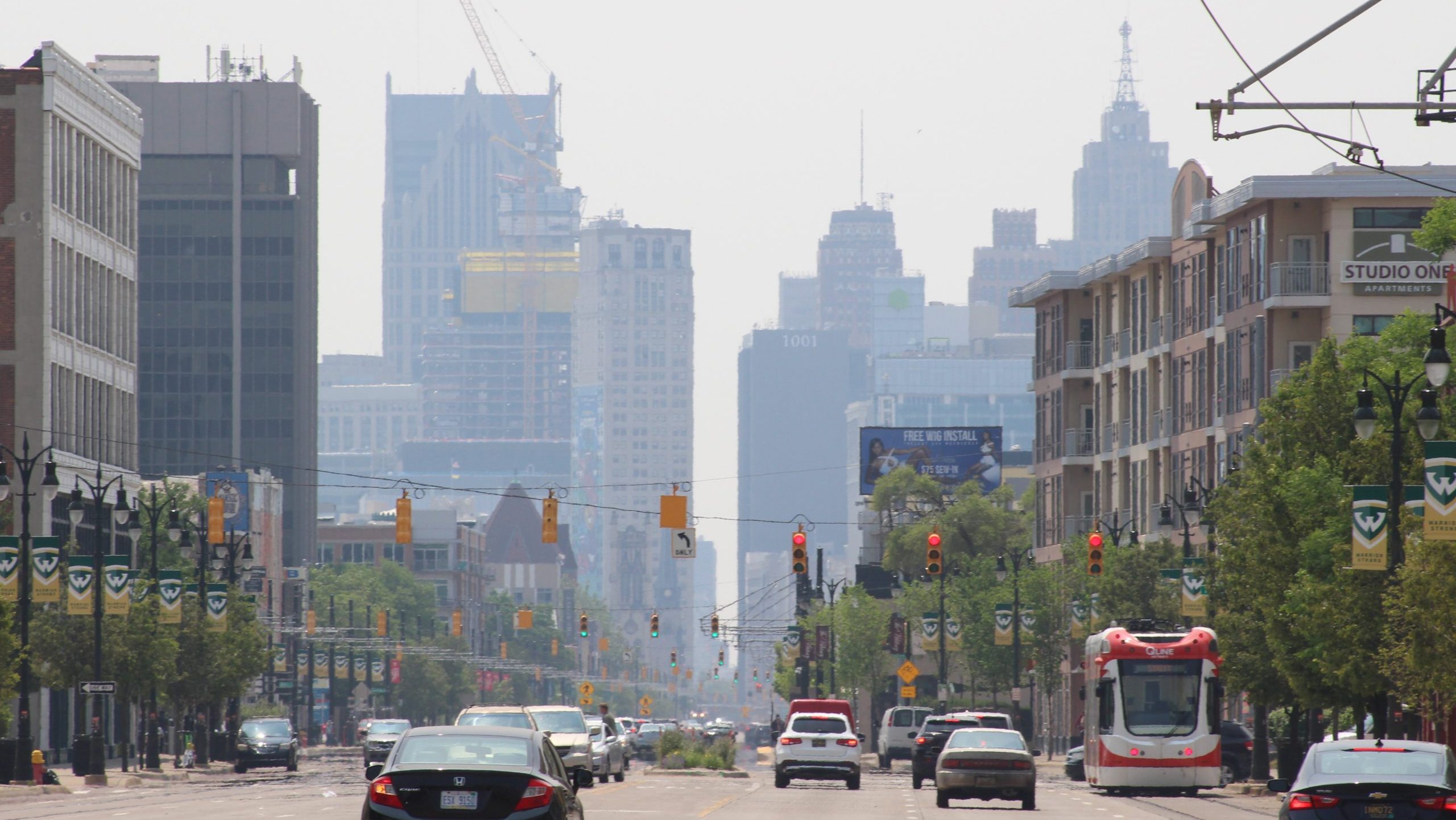California
Sewage seeps into California beach city from Mexico, upending residents’ lives: “Akin to being trapped in a portable toilet”

California resident Shannon Johnson lives a few blocks from Imperial Beach’s turquoise water and waves of “perfect little curls” — but Johnson and her two young children haven’t stepped foot on the sand in a year.
“Every time we go by the beach they’re asking, ‘Is it going to be clean? When are they going to fix it?’” said Johnson, 45, a former activist with the Surfrider Foundation, who has been living in Imperial Beach, a small coastal city of 26,000 people 20 minutes from San Diego, since 2010.
Heavy metals, toxic chemicals and bacteria including E. coli have been detected in the water, according to a San Diego State University report released last month. Researchers called the contamination “a public health crisis.” It has resulted in over 700 consecutive days of beach closures, leaving residents like Johnson feeling confined indoors with no end in sight.
Over the last five years, over 100 billion gallons of untreated sewage have flowed through Mexico’s Tijuana River and into the Pacific Ocean at the shores of the seaside town, contaminating the air, water and soil and posing environmental and public health hazards.
In addition to concerns about exposure to contaminants, another factor stemming from the sewage is causing residents to stay inside: “It’s the worst smell. It gets into your lungs. It gets into your clothes. It’s disgusting,” Johnson said.
Aging sewage plants and an “unbearable stink”
The sewage issue isn’t new— concerns about contamination of the Tijuana River date at least to the 1930’s — but the problem has worsened over the years. [“60 Minutes” reported on the problem in 2020 — watch more in the video player above.]
At the crux of it is two aging wastewater plants on either side of the U.S.-Mexico border: the South Bay International Wastewater Treatment Plant and the San Antonio de los Buenos Wastewater Treatment Plant. The former, situated in San Diego County, was constructed in the late 1990s to accommodate the influx of sewage from the growing population in Baja California, Mexico.
“Dangerous pathogens and chemicals in contaminated waters pose a spectrum of short and long-term health risks, spanning gastrointestinal issues to neurological disorders,” according to the SDSU report.
The plant has become overwhelmed as the population increased to over 3 million, as of 2020, and is ill-equipped to handle extreme weather events like Hurricane Hilary in 2023, which exacerbated existing issues with the plant’s infrastructure. On Jan. 11, Mexico marked the start of its rehabilitation efforts at the San Antonio de los Buenos Wastewater Treatment Plant in Tijuana, which releases millions of gallons of sewage a day into the Pacific Ocean. The country agreed to invest $33 million into replacing the decrepit plant and has also contributed $50 million toward the South Bay International Wastewater Treatment Plant.
In 2022, $300 million in federal funding was designated towards rehabilitating the plant, inspiring optimism among some residents. Marvel Harrison, 67, a psychologist who moved to Imperial Beach in 2020 with her retired husband, said they felt relieved when they learned about the funding.
But since then, the plant has racked up $150 million in repairs, prolonging expansion efforts and prompting California Gov. Gavin Newsom to ask Congress for an additional $310 million.
For Harrison and her husband, their future in Imperial Beach hinges on a timely solution. In 2015, the couple began the process of building their home on the water, investing in pricey features like custom windows to incorporate an indoor-outdoor living space. Now, nearly a decade later, the windows remain shut and they contemplate moving.
“I find myself looking at other places we might be able to live. And that’s really disheartening given that this is where and how we wanted to be in retirement,” she said, noting that being in their sixties, “it’s not like we can wait.”
Johnson has been faced with a similar choice. Despite her husband’s family having roots in Imperial Beach stretching back to the 1950s, she said they often look at other options. “You live here to be outside, and we can’t really go outside and feel comfortable and safe,” she said.
In a collection of letters from community members compiled by Harrison calling on elected officials to take action, one resident described the stink as “akin to being trapped in a portable toilet” — a smell so strong it wakes you up at night.
Potential health impacts reach beyond the stench
But the air carries more than just a stench. A recent study found evidence of coastal water pollution from the Tijuana River in sea spray aerosol capable of potentially diffusing far enough to reach places like schools and homes that wouldn’t otherwise be touched by the contamination. The implications of contamination by air are not yet known and need further study, according to the SDSU report, leaving some members of the community grappling for answers.
Johnson, who said she has health issues and has had two unexplained pulmonary embolisms, worries about whether the environment could be a contributing factor. “In the back of my mind, I’m like, does that have something to do with the air that I’m breathing?”
Her children, ages 9 and 10, attend elementary school near the river valley, where the smell can be especially strong. “They’re like, ‘Why is it so smelly? Is it safe?’” Johnson said. “I’m like, yeah, I guess so. What am I supposed to tell them?”
In some cases, residents’ concerns have led to lifestyle changes beyond being unable to enjoy the beach.
Harrison, who said her community is in a state of “chronic angst,” thinks twice before inviting guests to stay at her house out of concern for potential health impacts. She said sewage is a constant topic of conversation within her social circles.
“As much as the stink permeates the air, the topic permeates the stress and anxiety of everybody’s life here,” she said.
Another reminder of the sewage’s impact is its effect on wildlife. Bottlenose dolphins, increasingly found stranded in San Diego, are believed to have died from sepsis caused by a bacteria sometimes found in contaminated water. According to the SDSU report, the dolphins “serve as sentinels for the risk of possible human exposures to dangerous bacteria.”
Among the more pressing health threats to emerge from the sewage, according to the report, are human and livestock diseases from Mexico that have been eradicated in California, and antibiotic-resistant pathogens.
“There is a potential for both short- and long-term health risks associated with exposure, which really underscores the need for more comprehensive monitoring and research,” Dr. Paula Stigler Granados, one of the report’s lead authors, said in a recent news conference.
Imperial Beach has been hit by a wave of complications from the sewage. But for Johnson, the goal is simple: “I just want to see this resolved so that my kids can go back to the way it’s supposed to be and be able to enjoy the beach.”

California
Dow Jones stock index crosses 40,000: Good or bad for California?

The stock market’s venerable yardstick, the Dow Jones Industrial Average, just made history – crossing 40,000 for the first time.
Yes, this milestone set Thursday, May 16, is only a brief emotional victory for shareholders. Yet it can be seen as a historical milepost for the broader business climate, especially in California.
To honor the moment, the trusty spreadsheet reviewed the Dow’s 5,000-point markers and how California fared in those periods using an economic metric (California unemployment), an interest rate (the average 30-year fixed mortgage), and home prices from the California Association of Realtors.
As we begin our data-filled voyage, let’s note the Dow first crossed 5,000 in November 1995 — back when you could buy the median-priced California single-family home for $176,000.
5,000-point mileposts
Dow passes 10,000 in December 1999: It took the stock index just over four years to double from 5,000 compared with a 28% gain for California homes to $225,000 in the same timeframe. This was an era when the economy broke loose from its early 1990s slumber. California unemployment dipped between 1995 and 1999 to 5% from 7.9% while mortgage rates rose to 7.9% from 7.4%.
15,000 in May 2013: The Dow needed more than 13 years to gain 50% to hit this benchmark vs. an 85% surge for homes statewide to $417,000 in the same period. This extended gap came during the financial rollercoaster ride from the bubble period in the early 2000s bursting into a Great Recession and then the economy’s slow recovery. So, California unemployment was 9.2%, up from 5% at the beginning of this crazy period. Yet, cheap money was one salve: 3.5% mortgages vs. 7.9% in 1999.
20,000 in January 2017: The Dow took under four years to gain 33% to gain the next 5,000 while homes statewide gained 18% to $492,000 as the post-crash rebound continued. California unemployment fell to 5.2% from 9.2% as mortgage rates ticked up to 4.2% from 3.5% in 2013.
25,000 in January 2018: The Dow needed just one year to gain 25% for its next benchmark vs. a 7% gain for California homes to $528,000 as the recovery hit full stride. California unemployment dipped to 4.4% from 5.2% while mortgage rates slipped to 4% from 4.2% in 2017.
30,000 in November 2020: The index took just under three years to gain 20% vs. 32% for California homes to $699,000 in the middle of the pandemic’s business wild gyrations. California unemployment surged to 9% from 4.4% – but investors cheered historically cheap money such as mortgages hitting 2.8%, falling from 4% in 2018.
35,000 in July 2021: It took the Dow less than a year to gain 17% vs. 16% appreciation for California homes to $811,000 as the pandemic’s economic surge was in full force. Statewide unemployment fell to 7.4% from 9% and mortgages remained cheap – 2.9% vs. 2.8% in 2020.
40,000 in May 2024: The Dow took almost three years to gain 14% vs. an 11% gain for California homes to a record $904,000 in April. The economy struggles to find its new normal as statewide unemployment fell to 5.3% in April from 7.4%. But mortgages got expensive as the Federal Reserve fought and overheated economy – 7% in April from 2.9% in 2021.
Bottom line
So, the Dow is up eight-fold since crossing 5,000 just over 28 years ago. California homes are only five times more expensive.
That’s not the point, though. This stroll down memory lane reminds us that the markets typically need a solid economy for stocks or homes to appreciate. Cheap money is the icing on the cake.
Jonathan Lansner is the business columnist for the Southern California News Group. He can be reached at jlansner@scng.com
California
California continues to lead in US unemployment rate

SACRAMENTO: The state of California continues to lead the United States in the number of job losses since the start of this year, reported Xinhua, quoting a report by California’s Employment Development Department on Friday.
The unemployment rate in California, home to around 40 million residents, remained unchanged at 5.3 per cent in April for the third consecutive month, maintaining the highest level in the country.
The report showed that the number of unemployed Californians was 1,027,000 in April – down by 5,900 from the previous month and up 164,700 year on year.
This is the second time in five months the total number of the unemployed has declined. It comes amidst sluggish job growth, with statewide employers adding just 5,200 nonfarm payroll jobs in April, a significant drop from the 18,200 jobs added in March.
According to the report, California’s employment landscape has been particularly bleak across several major sectors. Manufacturing, information, and professional and business services all experienced job losses in the past month, contributing to a less robust job market.
Meanwhile, five of California’s 11 industry sectors gained jobs in April, with private education and health services posting the largest month-over-month gain for the fourth consecutive month.
California
Priorities & Progress | Governor of California

Working towards a better life for all
Californians deserve a government that works for them and with them. One that will work to ensure opportunity and justice. This is the goal of the Newsom Administration.
We are informed by our history as a state and nation. We are building a California not for the few, but for all — including those who have historically been left out.
We are doing the work to make our state a place for every Californian and all the diversity that makes us strong. Our state will be known as a place where everyone is respected, protected, and connected.
-

 World1 week ago
World1 week agoPentagon chief confirms US pause on weapons shipment to Israel
-

 Politics1 week ago
Politics1 week agoRFK Jr said a worm ate part of his brain and died in his head
-

 Politics1 week ago
Politics1 week agoOhio AG defends letter warning 'woke' masked anti-Israel protesters they face prison time: 'We have a society'
-

 Education1 week ago
Education1 week agoVideo: Police Use Pepper Spray on Protesters on G.W.U.’s Campus
-

 News1 week ago
News1 week agoNine Things We Learned From TikTok’s Lawsuit Against The US Government
-

 Politics1 week ago
Politics1 week agoBiden’s decision to pull Israel weapons shipment kept quiet until after Holocaust remembrance address: report
-

 World1 week ago
World1 week agoA look at Chinese investment within Hungary
-

 News1 week ago
News1 week agoThe Major Supreme Court Cases of 2024













:quality(70)/cloudfront-us-east-1.images.arcpublishing.com/adn/5BVPQDP3BNCD5CBOOCBDNH6Q5I.jpg)









